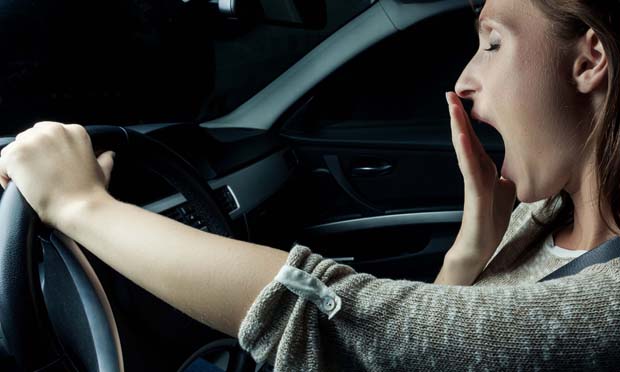Drowsy driving has caused or contributed to hundreds of thousands of motor vehicle crashes and thousands of deaths in recent years. Estimates of drowsy driving-related accidents, injuries and deaths vary, however. According to the National Highway Traffic Safety Administration (NHTSA), sleep-deprived and fatigued drivers caused 846 deaths in 2014. The NHTSA reports that, on average, an estimated 83,000 crashes a year were blamed on sleepy drivers between 2005 and 2009.
A report from the Massachusetts Special Commission on Drowsy Driving suggests that the problem is much worse. The widely-publicized 2009 report, “Asleep at the Wheel,” estimates that drowsy driving accounts for 1.2 million accidents, 500,000 injuries and 8,000 deaths a year.
Policymakers have tried to discourage drowsy driving by bringing attention to the issue and, in some cases, making it a crime. In New Jersey, for example, a driver who has been without sleep for more than 24 hours is considered to be driving recklessly and can face criminal penalties. The National Conference of State Legislatures tracks legislation related to drowsy driving in each state. Other organizations also are working to keep fatigued drivers off the road. In May 2016, the Taxi and Limousine Commission of New York City announced a proposal to reduce driver fatigue by placing new limits on the number of consecutive hours a driver can work.
To learn more about the causes and consequences of drowsy driving, a group of eight researchers studied the driving habits of night-shift workers. The group, led by Michael L. Lee of the Division of Sleep Medicine at Harvard Medical School and the Division of Sleep and Circadian Disorders at Brigham and Women’s Hospital in Boston, observed 16 night-shift workers as they completed certain driving tasks on a closed track at the Liberty Mutual Research Institute for Safety in Massachusetts. The scholars compared the driving performance of workers following a night of at least five hours of sleep and the driving performance of workers who had just completed an overnight shift. They measured the drivers’ eye movements and blink duration to gauge alertness. The 2016 study, titled, “High Risk of Near-Crash Driving Events Following Night-shift Work,” was published in PNAS.
Some of the key findings include:
- Almost 38 percent of the drives that were performed after a work shift resulted in a near-crash. In those cases, a “safety observer” who rode in the front passenger seat had to use an emergency brake to prevent a crash. There were no near-crash incidents during drives that were performed after several hours of sleep.
- Seven of the 16 drives performed after night-shift work had to be terminated prematurely because the driver could not maintain adequate control of the vehicle. This did not occur after drivers had at least five hours of sleep.
- Ocular measures of drowsiness were significantly higher for drivers who had just worked a night shift compared to those who had multiple hours of sleep.
- While there were early indications of drowsiness among drivers who had just worked a night shift, the near-crash events and drive terminations occurred 45 minutes or more after the start of the drive.
The study found that there is a high risk of dangerous driving after working a night shift and that prolonged driving may be especially hazardous. “Because our results indicate that the risk of sleep-related near-crash incidents increases steeply with drive duration, night-shift workers should be advised to limit their drive duration or seek alternate forms of transportation after night-shift work,” the authors state. “Given that drivers were aware of drowsiness and indicators of impaired performance, education about the hazards of driving after night-shift work and the need to heed the warning signs of increased drowsiness could help prompt drivers to minimize driving after night work and to stop driving when their performance is impaired by drowsiness.”
Related research: A 2016 study by University of Maryland researchers, “Intentions and Willingness to Drive While Drowsy Among University Students: An Application of an Extended Theory of Planned Behavior Model,” attempts to understand the reasons college students drive while sleepy. A 2014 study published in Academic Pediatrics, “Potential Distractions and Unsafe Driving Behaviors Among Drivers of 1- to 12-Year-Old Children,” finds that 20 percent of the parents who participated in a research survey admitted to drowsy driving in the past year.
Keywords: car crash, motor vehicle crash, motor vehicle safety, night work, factory work, overtired, sleep-related crashes, driver fatigue


Expert Commentary